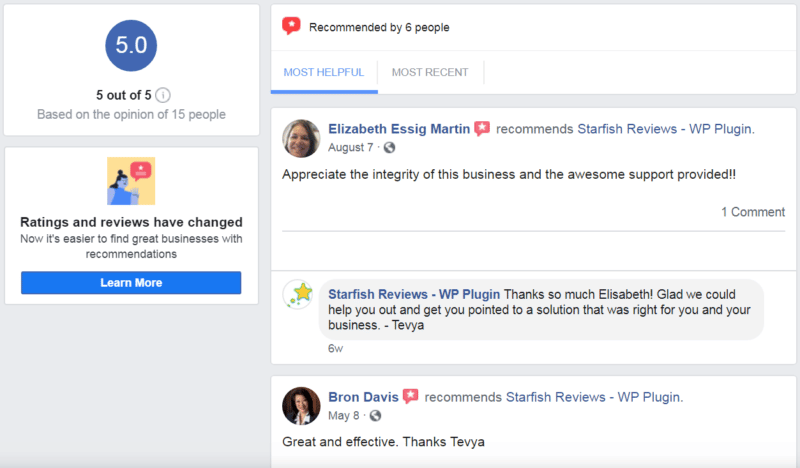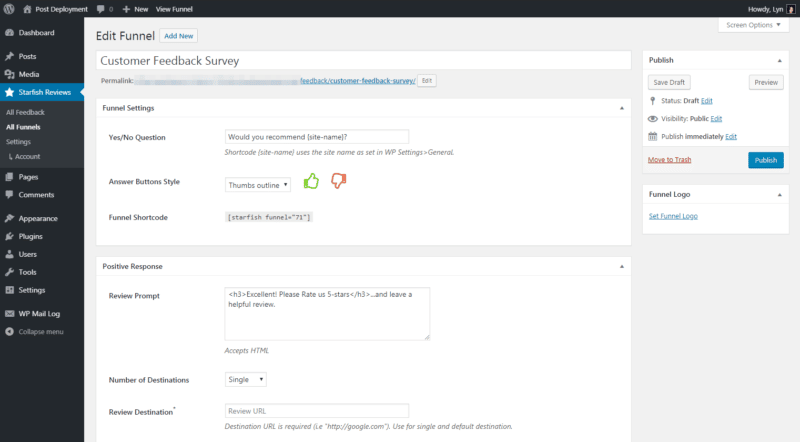Growing your business with online reviews is an important marketing strategy that should not be overlooked. Content marketing and advertisements are essential, but review marketing allows you to utilize the power of social proof to raise brand awareness and attract more customers to your business.
In this post, we’re going to go over the five-step process you can use to grow your business with online reviews. It involves the following:
- Perfecting your product and service
- Choosing primary review platforms
- Nurturing customers before asking them for feedback
- Segmenting customers based on the feedback they leave
- Including reviews in your marketing strategy
Step 1: Perfect Your Product and Service

This is where marketing for online reviews needs to begin. If you don’t have a good product or don’t offer fantastic customer service, you’ve got nothing. Customers won’t want to leave reviews, and the ones you do receive will be negative.
You’ll waste resources rebuilding your reputation all while spending more time and money figuring out how to fix your product and retrain your staff. If you put in that effort now, you’ll be rewarded with customers who become raving fans. These are the most valuable types of customers you can have as they’ll promote your business without being prompted.
Start by perfecting your product. If you start with customer service, you’ll only wind up spending more on hiring and retraining team members to deal with the number of support tickets and negative reviews you receive.
You don’t need to get on the same level of obsession with perfection as Steve Jobs, but you should be meticulous about every little detail involved with the production and outcome of your product. This is true even if your “product” is a service. Be sure to use feedback from current customers and reviews as inspiration for how to improve.
Step 2: Choose Your Review Platforms

Next, carefully chose which review platforms you want to focus on. Sure, Google and Facebook are the go-to platforms for the majority of customers today, but are they the go-to platforms for your customers?
When you promote content or are curious as to what problems your audience is having, you’ll find more success on platforms your audience hangs out on the most. Review marketing is no different.
As far as this guide is concerned, your goal here is to grow your business with online reviews, not increase the number of reviews you have. It may be a good idea to focus on platforms your competitors haven’t reached yet when it comes to growing the number of reviews you receive. When it comes to using online reviews as a marketing tool, it’s best to go where you’ll receive the most traffic for search queries related to your business.
Make a list of all of the review platforms you and your competitors receive the majority of your reviews on. If you sell your products on marketplaces that have built-in review systems, such as Amazon, include them in your list as well.
You should also take the time to learn how each platform works. This helps to ensure you meet each platform’s and consumers’ expectations.
Step 3: Nurture Customers Before Asking for Feedback
While earning more reviews shouldn’t be the sole focus of using them to grow your business, it does play a major role in the process. This is due to the various factors consumers consider before they decide to give businesses their hard-earned cash.
Along with your average star rating, they also consider how many reviews you’ve received and how often you receive them. This means you should include asking for feedback from new and recent customers in your review marketing strategy as a way to attract more business through online reviews.
You may have heard the word “nurture” in regards to marketing before. It’s a slow-burn strategy you can implement to soften customers before hitting them with your sales pitch. In this case, your “sales pitch” is asking them to provide feedback on your business or product. It’s often much more effective than presenting customers with sales pitches right off the bat.
The 3-Part Nurture Funnel
Use an email marketing service that offers ecommerce-based automations and segmentation. ConvertKit, MailerLite and MailChimp are a few examples of services that offer these features. MailPoet will also do this if you prefer a solution that runs on WordPress.
When a new customer joins your email list, add them to a “New Customers” funnel. If they’re a returning customer, add them to a “Recently Purchased” funnel. You’ll need to experiment and go through your email marketing service’s documentation to learn how to do this since every service is different.
It’s up to you to decide how many emails you want to add to your funnel and how often to send them. As a suggestion, try starting off with three emails sent over nine to 15 days, meaning three to five days between each email. Be sure to send Email 1 at least three days after they purchase since the first email they’ll receive from you will be the usual “thanks for ordering, here’s your receipt” and “welcome” content.

Here’s a quick outline of how to implement this funnel in terms of content. Be sure to adjust it to suit your needs.
- Email 1: More Information – Send them more information about the product or service they purchased. Include links to articles you’ve written on the subject, and make sure to remind them about your support options and help docs if they need help.
- Email 2: Free Offer – Send them a free offer with no strings attached. This could be anything from a complimentary gift or a free ebook you’ve written. Make sure the gift suits your customer base and budget. For example, if you receive 20 or more new customers a day, you likely won’t benefit from offering a $5 Amazon gift card to each.
- Email 3: Request Feedback – Note how I keep using the term “feedback” instead of “ask for review.” Some of your customers may still feel frustrated with your product or service. This is why it’s smart to request feedback so you can send customers who report negative feedback to support staff and customers who report positive feedback to review platforms. This is exactly what our WordPress plugin is designed for. And don’t worry, if you want to give customers who report negative feedback a fair chance to leave a review, you can.
Step 4: Segment Customers with Starfish Reviews and Acquire More Reviews
In this step, do exactly what it says to do with Email 3. Again, this is something you can set up with Starfish Reviews with what we’ve named “funnels.” The way it works is simple: you direct the customer to a page that asks a simple question, such as “would you recommend our business?” or “are you enjoying our product?”

Two options are presented to your customer in the form of icons. With Starfish Reviews, you choose what happens based on the option your customer chooses. If they choose the positive option, you can ask them to leave a review and present them with a single platform or multiple review platforms to choose from. Again, these should be the platforms you identified in Step 2.

If they choose the negative option, you can have them leave their feedback and contact information. You can also enter an email address here where the responses will be sent to, though Starfish Reviews does store the input, so you can review your customers’ responses from funnels on the backend.
You can also “disable review gating” option. This allows the person to leave a public review instead of submitting it directly to you. We recommend doing this to comply with Google and Yelp’s rules.
Step 5: Include Reviews in Your Marketing Strategy
Once you have strategies set in place for enhancing your product, improving your customer service, and asking for reviews, you’re ready to start growing your business by including reviews in your marketing strategy.
Start by responding to reviews regularly. Stick with platforms you’re most popular on if you’re pressed for time. We have posts on how to respond to positive reviews and how to turn negative reviews into positive marketing.
You can also use the positive reviews you receive as social proof. Place reviews of your business and products on landing pages. You can also use quotes from reviews in marketing materials, such as advertisements.
The Power of Social Proof Marketing
To reiterate, growing your business with online reviews is an effective marketing strategy due to one key factor: social proof. Having brand awareness across your own blog, third-party blogs and websites, social media, and elsewhere is obviously important, but nothing is quite as effective—and cheap—as having your customers promote your business for you.
Make sure you’re routinely finding ways to improve your product and customer service. When it comes to asking customers for reviews, focus on platforms your customers are using most. Learn your way around them while you’re at it
Above all, be certain to take your time giving customers added value before asking them for feedback. Act accordingly when they do, be it negative or positive feedback. You’ll find a link to Starfish Reviews below if you’re interested in streamlining this process.





Thanks for useful tips. My product is a plugin so I mostly get reviews from the free version on WordPress.org. Some people even left me 1-star ratings without providing a persuasive reason. Do you have any recommendations to reduce this?
Hi Alice, that’s a great question. One thing you could do is use our plugin Starfish Reviews and send the funnel to your users. That can help filter out the negative reviewers and give them a chance to communicate with you directly. You might also check out our post on how to respond to negative reviews. They can actually be helpful if handled correctly.
Very informative post! Online reviews have become the sole sources that people use to judge a personality and brand online.
Hey Alice, a variety of ways are there to manage the negative reviews, and one of the best ways among them is to respond to them ASAP. Reverting to the negative reviews with a calm and professional gesture can shape the reviewers’ opinions. Don’t be defensive as by doing this, you might be proving that the reviewer was right about you.